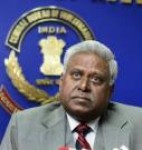No protection for sources
Journalists and whistleblowers are vulnerable to demands to disclose sources.
And the law is still silent, says GEETA SESHU (PIX: Ranjit Sinha)

Even as New York Times reporter James Risen prepares to go to jail, perhaps in a few weeks from now, for refusing to disclose the source of a 2006 book on a botched CIA operation in Iran, the imbroglio in India over the demand to disclose the sources of news reports on the CBI director’s visitor’s diary has again focused on how vulnerable journalists and whistleblowers really are.
In the USA, journalists in a few states have a limited right to protect their sources and are pressing for a comprehensive federal shield law. In India, the absence of any laws for journalists’ to protect their sources makes the grounds for disclosure anything from national security to privacy!
In the Ratan Tata petition on the Radia tapes and the 2G spectrum case, the alleged violation of privacy rights were used, rather unsuccessfully so far, to demand the disclosure of sources of information. In the latter case, the Centre for Public Interest Litigation (CPIL), which had filed a petition that the CBI director was meeting various people in his residence in connection with investigations on the coal block scam and the 2G spectrum case, refused to reveal its source stating that the whistleblower’s life would be in danger.
Anand Grover, the special public prosecutor in the 2G scam, was appointed by the Supreme Court to examine the plea of the CBI Director to disclose the source of the information. Grover submitted his report in a sealed envelope to the court and, according to news-reports, has rejected the plea.
He maintained that there was no privacy violation in the information as there was nothing personal in it. His report said: "Given that the CBI director had his camp office located at his residence, the information contained in the register does not pertain to the CBI director's personal affairs and rather appears to be a record of his professional meetings conducted in his official capacity."
Scant protection for whistleblowers…
We do have a Whistleblower Protection Act, passed in 2011 and notified in May this year. The act does provide for some protection for people who disclose information of corruption to a designated authority – now the Central Vigilance Commissioner – but that can change if the government decides to notify another authority. In any case, rules for the act are awaited.
Of course, the act retains its exceptions: the eternal bugbear for journalists - national security. Besides, the act doesn’t apply to Jammu and Kashmir, to the armed forces and to the Special Protection Group (SPG), which looks after the security of the Prime Minister and senior cabinet ministers.
…even less for journalists!
The act is pretty much silent when it comes to rights of journalists to reveal their sources. There have been at least two Law Commission reports on the issue. In 1983, the Tenth Law Commission headed by Justice K M Mathew submitted a report ‘Disclosure of sources of information by mass media’. The report summarized the grounds for privileging information under the Indian Evidence Act, 1872 (communications between spouses, a lawyer and client, state secrets, certain incriminating matters etc). In two instances, editors chose to go to jail rather than disclose the sources of their information(Kaliprasanna Kavyabisharad, editor of Bengali publication Hitabadi and Bipin Chandra Pal in 1907).
In its report, the Law Commission said that, while no absolute privilege could be granted to the journalist, courts should be vested with the power to decide whether a journalist should be compelled to reveal his/her source, under the Indian Evidence Act (just what the Supreme Court initially did in the matter of the CBI Director’s visitor diary).
The Press Council was just a bit more forthcoming on non-disclosure of sources (Sec 15 (2)) but only for proceedings before it and its norms of journalistic conduct says that confidentiality must be maintained, unless a source voluntarily comes forward to disclose information.
Journalists need sources for their stories and they need to protect their sources and the trust and confidentiality reposed on them, perhaps even from their editors, as this light-hearted piece by then DNA editor Aditya Sinha said (he was referring to a notice sent to the newspaper for violation of the Official Secrets Act for a report by Saikat Datta on the leak of a letter sent by then Army chief V K Singh to former Prime Minister Manmohan Singh).
But demands to disclose sources are, regrettably, not a laughing matter for journalists who live and work in relatively less protected areas like the North East. Here, journalists who have done investigative stories are targeted by authorities and have very little chance of protecting themselves, even fearing for their lives or risking arrest on charges under the NSA or the more feared UAPA. And, as in the case of theNaharolgi Thoudang editor, Loya Thoudang, printing news from underground insurgency groups, is like a red rag!
Today, governments have become more unyielding over what they consider protected information for national security. Besides, they are already armed with highly sophisticated surveillance devices. The absence of any legal protections only makes it easier to demand disclosures from journalists and whistleblowers, rendering them more vulnerable to pressure.